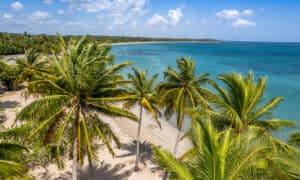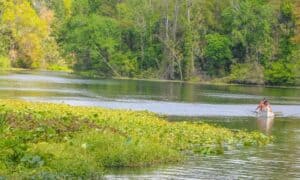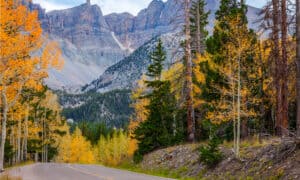Virginia is home to a multitude of national parks that have preserved the history of early America. These landscapes are home to many animal species, including birds like falcons, hawks, sparrows, and large mammals like elk and black bears. According to Ecological Applications, most state parks in Virginia suffer from a range of invasive plant species.
Let’s dive into 12 of the best national parks and other public lands that can be found in Virginia!

1. Appomattox Court House National Historical Park
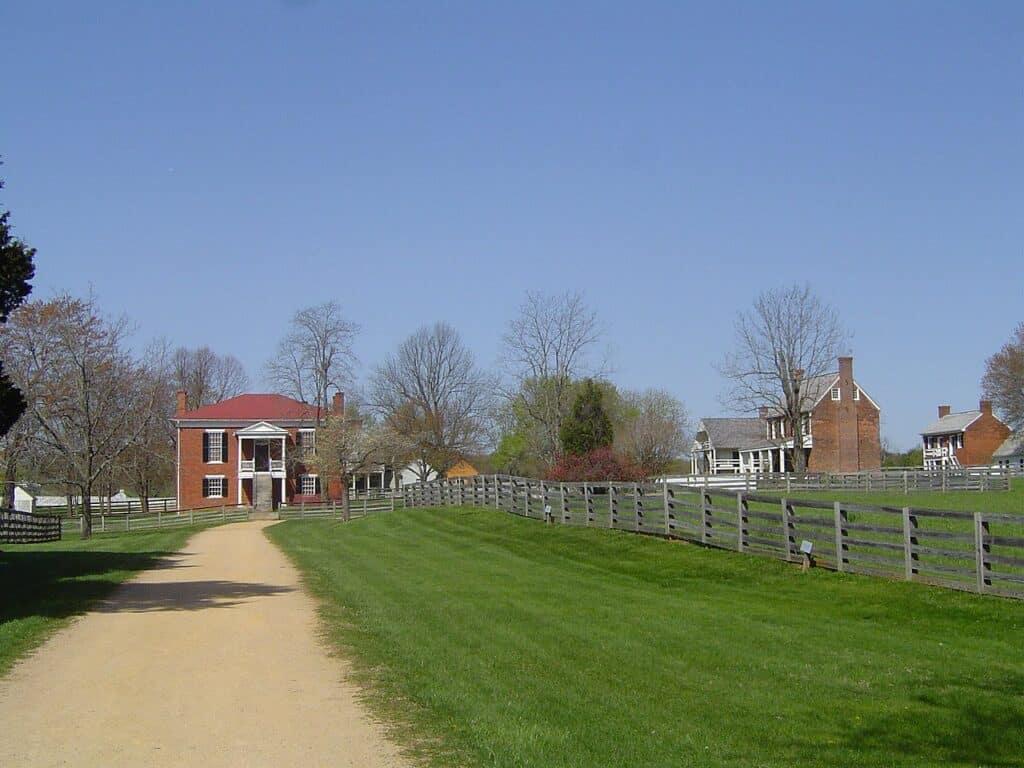
The Appomattox Court House National Park was established to preserve this historical site and its land
©Doug Coldwell – License
| Appomattox Court House National Historical Park | |
|---|---|
| Size | 1,774 acres |
| Animal to see | Sparrow |
| Attraction to see | McLean House |
The site that marked the end of the Civil War can be visited in Appomattox, Virginia. On April 9, 1865, the South’s surrender was accepted in the McLean House. The Appomattox Court House National Park was established to preserve this historical site and its land. Visitors can still see the McLean House today, and explore all of the other historical aspects of Appomattox. The park covers over a thousand acres of land and is home to many Virginia species, such as woodchucks, skinks, and sparrows.
2. Blue Ridge Mountains

The Blue Ridge Mountains cover over 90,000 acres of land
©Jon Bilous/Shutterstock.com
| Blue Ridge Mountains | |
|---|---|
| Size | 93,390 acres |
| Animal to see | falcon |
| Attractions To see | Blue Ridge Parkway |
The Blue Ridge Mountains go through Virginia and North Carolina and are one of the most breathtaking national parks in the South. The Blue Ridge Parkway offers more than 400 miles of road where visitors can enjoy many scenic views. The park itself is massive and covers over 90,000 acres. These mountain ranges protect a diverse population of plant and animal life. You may come across elk, river otters, and falcons.
3. Cape Henry Memorial
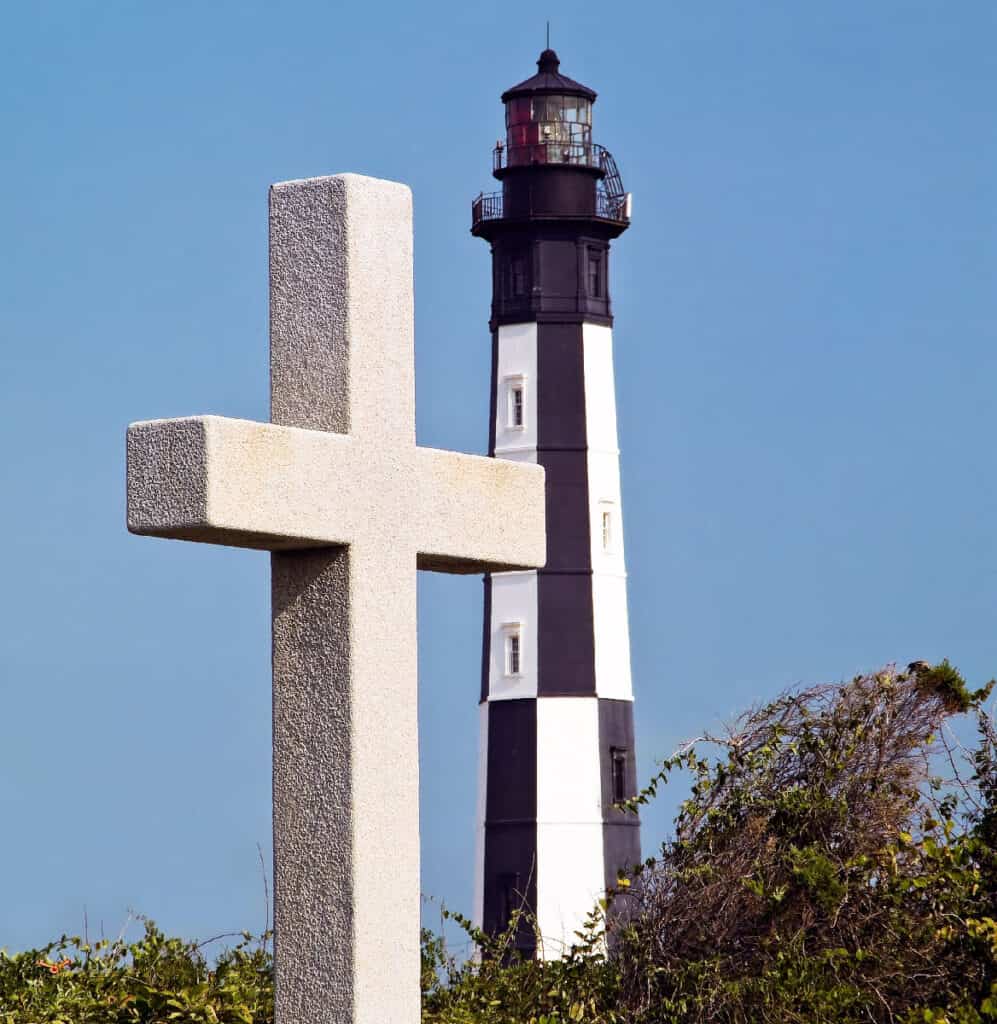
Cape Henry Memorial protects the important landmarks of America’s history
©Kenneth Keifer/Shutterstock.com
| Cape Henry Memorial | |
|---|---|
| Size | 0.25 acres |
| Animal to see | Hawk |
| Attraction to see | Memorial Cross |
Fort Story, Virginia marks one of the first locations where early settlers landed when they first arrived in America. Over one hundred years later, it also saw one of the biggest naval battles during the Revolutionary War. The Cape Henry Memorial is part of the Colonial National Historical Park established in the town. It protects the important landmarks of America’s history and is home to many animals that make their home along the shore. You may come across squirrels, field mice, and hawks during your visit.
4. Cedar Creek & Belle Grove National Historical Park

Cedar Creek and Belle Grove National Parks are located in the Shenandoah Valley
©AgnosticPreachersKid / Creative Commons – License
| Cedar Creek & Belle Grove National Historical Park | |
|---|---|
| Size | 3,712 acres |
| Animal to see | Black bear |
| Attraction to see | Shenandoah Spirits Trail |
Cedar Creek and Belle Grove National Parks are located in the Shenandoah Valley. It has a rich history full of Native American culture that can still be experienced today. The valley also played an important role in early American agriculture and was once full of rolling wheat fields. This area in Virginia was the site of many significant Civil War events, such as the Battle of Cedar Creek. Remnants of the battles can still be seen in the valley’s fields. Many native Virginia animals live in the surrounding forests. The park covers more than three thousand acres and is home to black bears and deer.
5. Fort Monroe National Monument

Fort Monroe is also known for Captain John Smith and his numerous exploits in the New World
©United States Government / Public Domain – License
| Fort Monroe National Monument | |
|---|---|
| Size | 565 acres |
| Animal to see | Jellyfish |
| Attraction to see | Casemate Museum |
Virginia is full of historical sites from the Civil War, including Fort Monroe. The fort is also known for Captain John Smith and being a staging ground for his numerous exploits in the New World. The National Monument was established to reflect this rich history and educate visitors about Fort Monroe’s role in America. There is still preservation work going on to protect land and landmarks around it. Around the moat of the Fort, you may notice waterfowl and jellyfish.
6. George Washington Birthplace National Monument
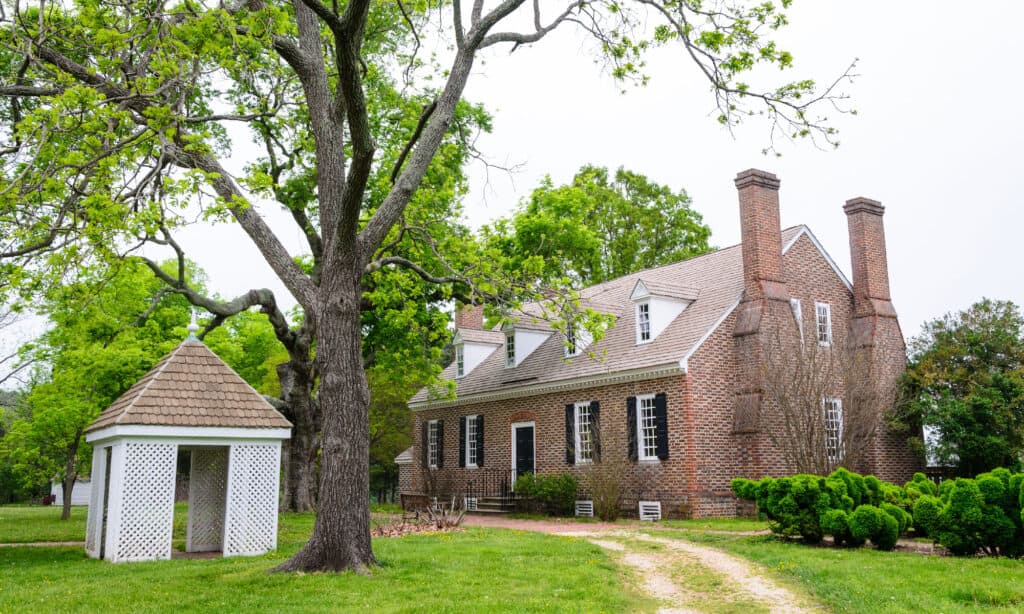
The George Washington Birthplace National Monument covers 550 acres of land
©Zack Frank/Shutterstock.com
| George Washington Birthplace National Monument | |
|---|---|
| Size | 661.7 acres |
| Animal to see | Racoon |
| Attraction to see | Colonial Revival Farm |
In the northernmost part of Virginia, you can visit the birthplace of George Washington, America’s first President. The George Washington Birthplace National Monument covers more than 500 acres of land that once served as the Popes Creek Plantation.
During your visit, you can see the home Washington was born in, as well as historical structures, a burial ground, and a Colonial Revival farm. There is also access to a public beach and picnic grounds for enjoying a relaxing afternoon. A number of animals can be found in the area, including raccoons, deer, and squirrels.
7. Great Falls Park
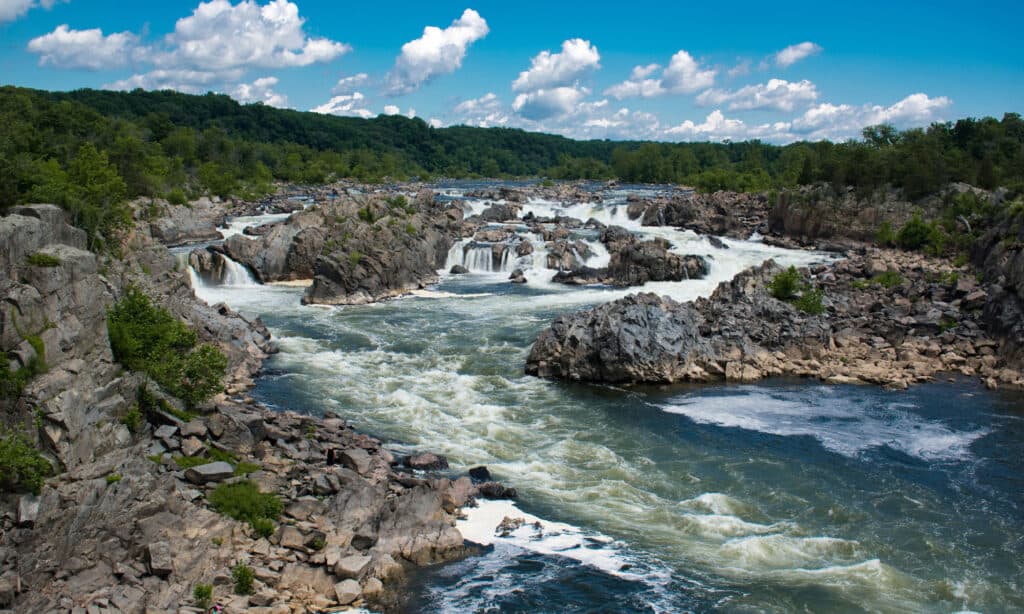
At Great Falls Park, you might come across otters, beavers, or deer along the water’s edge
©iStock.com/Douglas Rissing
| Great Falls Park | |
|---|---|
| Size | 800 acres |
| Animal to see | River otters |
| Attraction to see | Patowmack Canal |
Great Falls Park is one of the major landmarks in Virginia, it is situated along the banks of the Potomac River. The river turns into a waterfall that flows into the jagged rocks of Mather Gorge. Great Falls is barely fifteen miles away from the United States capital, Washington DC. The waterfall is surrounded by 800 acres of land that preserves the country’s early history. You can explore the Patowmack Canal, or hike the numerous trails. You might come across otters, beavers, or deer along the water’s edge.
8. Green Springs National Historic Landmark District
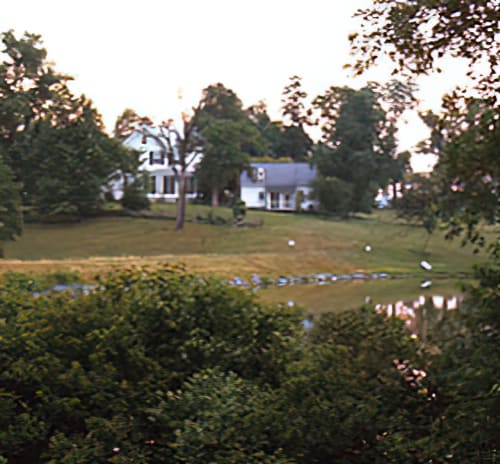
The protected land of Green Springs is home to many of the native species that call Virginia home
©National Park Service / Public Domain – License
| Green Springs National Historic Landmark District | |
|---|---|
| Size | 14,000 acres |
| Animal to see | Loon |
| Attraction to see | Farmsteads |
Green Springs is a National Historic Landmark District that expands through Louisa County, Virginia. This national park covers 14,000 acres and is home to numerous historical structures. Several preserved farmsteads can be dated back to the 19th century. While Green Springs is privately owned, several public roads offer wonderful views of the landscape. The protected land of Green Springs is home to many of the native species that call Virginia home. The area is home to loons, elk, raccoons, and more.
9. Harpers Ferry National Historical Park
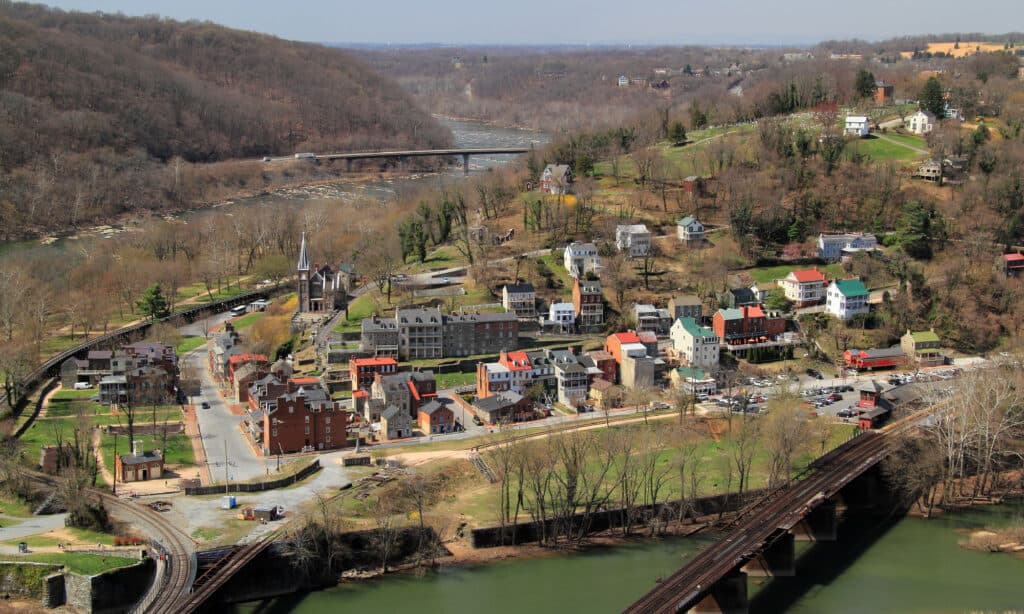
Harpers Ferry stretches across three states, Virginia, West Virginia, and Maryland
©iStock.com/Wilsilver77
| Harpers Ferry National Historical Park | |
|---|---|
| Size | 3,660.73 acres |
| Animal to see | Catfish |
| Attraction to see | Potomac River |
Harpers Ferry stretches across three states, Virginia, West Virginia, and Maryland. It brings nature and history together and offers plenty of educational opportunities for visitors to enjoy. You can see the site of John Brown’s Raid, which is credited as one of the events that jump-started the Civil War. You can marvel at the water of the Shenandoah and Potomac rivers, or hike the trails that wind through the Blue Ridge Mountain range. The rivers are home to several fish species, such as catfish and carp.
10. Historic Jamestowne

Historic Jamestowne is home to many animal species, such as skunks, raccoons, snakes, and turtles
©iStock.com/ClaudineVM
| Historic Jamestowne | |
|---|---|
| Size | 20.63 acres |
| Animal to see | Skunk |
| Attraction to see | Jamestowne Foot Bridge |
The site that started the colonization of America can be visited in James City County, Virginia. Historic Jamestowne was the start of Captain John Smith’s explorations through the countryside and where he met Pocahontas. The settlement was first established in 1607 and had turned into a thriving colony by 1619. This historical site is one of the best places to learn about the early beginnings of the United States. It’s home to many animal species, such as skunks, raccoons, snakes, and turtles.
11. Petersburg National Battlefield
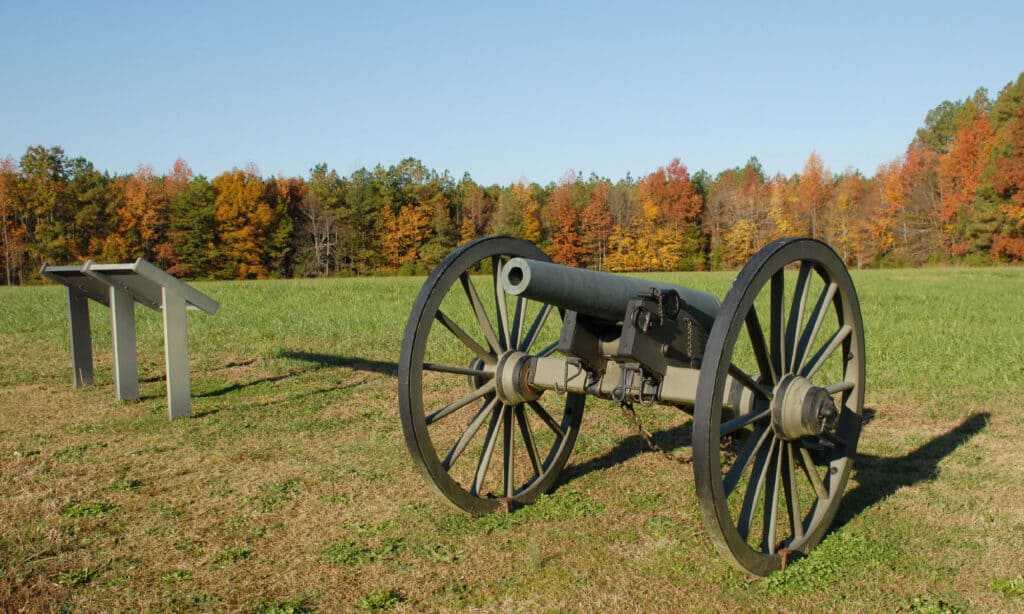
Petersburg National Battlefield covers 9,368 acres of land
©iStock.com/visionsofmaine
| Petersburg National Battlefield | |
|---|---|
| Size | 9,368 acres |
| Animal to see | Fox |
| Attraction to see | Centre Hill Mansion |
The Battle of Petersburg during the Civil War lasted for nine and a half months as General Ulysses S. Grant and his troops attempted to take Petersburg. There were over 70,000 casualties throughout the battle. The Petersburg National Battlefield was established to commemorate this historic event and covers land home to many of Virginia’s wildlife species. You may find deer, shrews, and foxes.
12. Prince William Forest Park
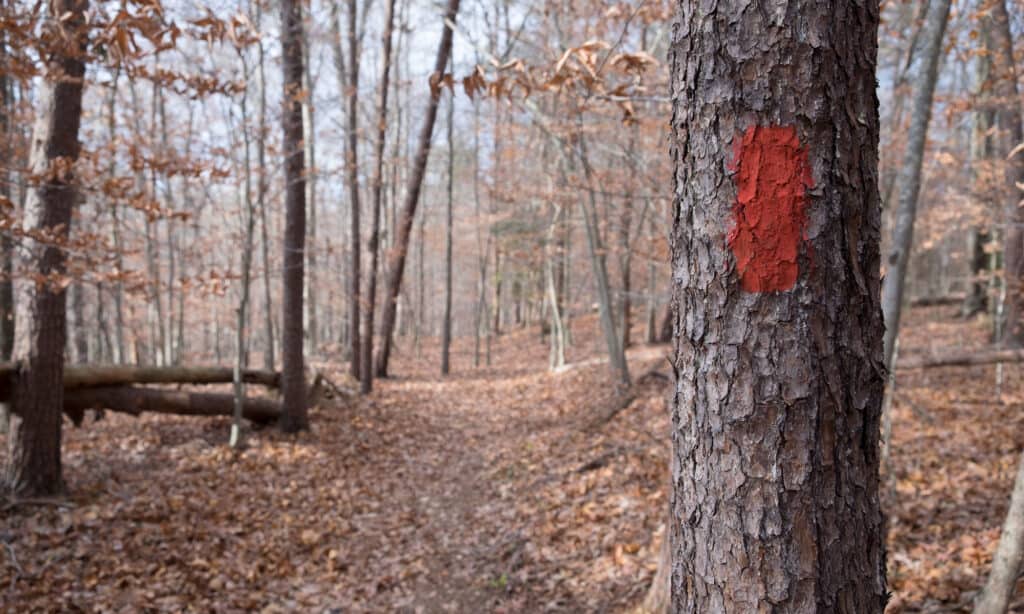
Prince William Forest Park was first opened as the Chopawamsic Recreation Area in 1936
©iStock.com/Ausettha
| Prince William Forest Park | |
|---|---|
| Size | 15,000 acres |
| Animal to see | White-tailed deer |
| Attraction to see | Marine Corps Museum |
The Prince William National Forest Park is one of the less well-known sites in Virginia. It was first opened as the Chopawamsic Recreation Area in 1936. The area held relief camps for children during the Great Depression. In 1948, it was renamed the Prince William Forest Park. The woods are full of lush trees, babbling brooks, and multiple wildlife species native to Virginia. You might see deer, raccoons, birds, or snakes during your visit.
Summary of the 12 Best National Parks in Virginia
| Rank | Park | Size |
|---|---|---|
| 1 | Appomattox Court House National Historical Park | 1,774 acres |
| 2 | Blue Ridge Mountains | 93,390 acres |
| 3 | Cape Henry Memorial | 0.25 acres |
| 4 | Cedar Creek & Belle Grove National Historical Park | 3,712 acres |
| 5 | Fort Monroe National Monument | 565 acres |
| 6 | George Washington Birthplace National Monument | 661.7 acres |
| 7 | Great Falls Park | 800 acres |
| 8 | Green Springs National Historic Landmark District | 14,000 acres |
| 9 | Harpers Ferry National Historical Park | 3,660.73 acres |
| 10 | Historic Jamestowne | 20.63 acres |
| 11 | Petersburg National Battlefield | 9,368 acres |
| 12 | Prince William Forest Parks | 15,000 acres |
The photo featured at the top of this post is © iStock.com/Douglas Rissing
Thank you for reading! Have some feedback for us? Contact the AZ Animals editorial team.



